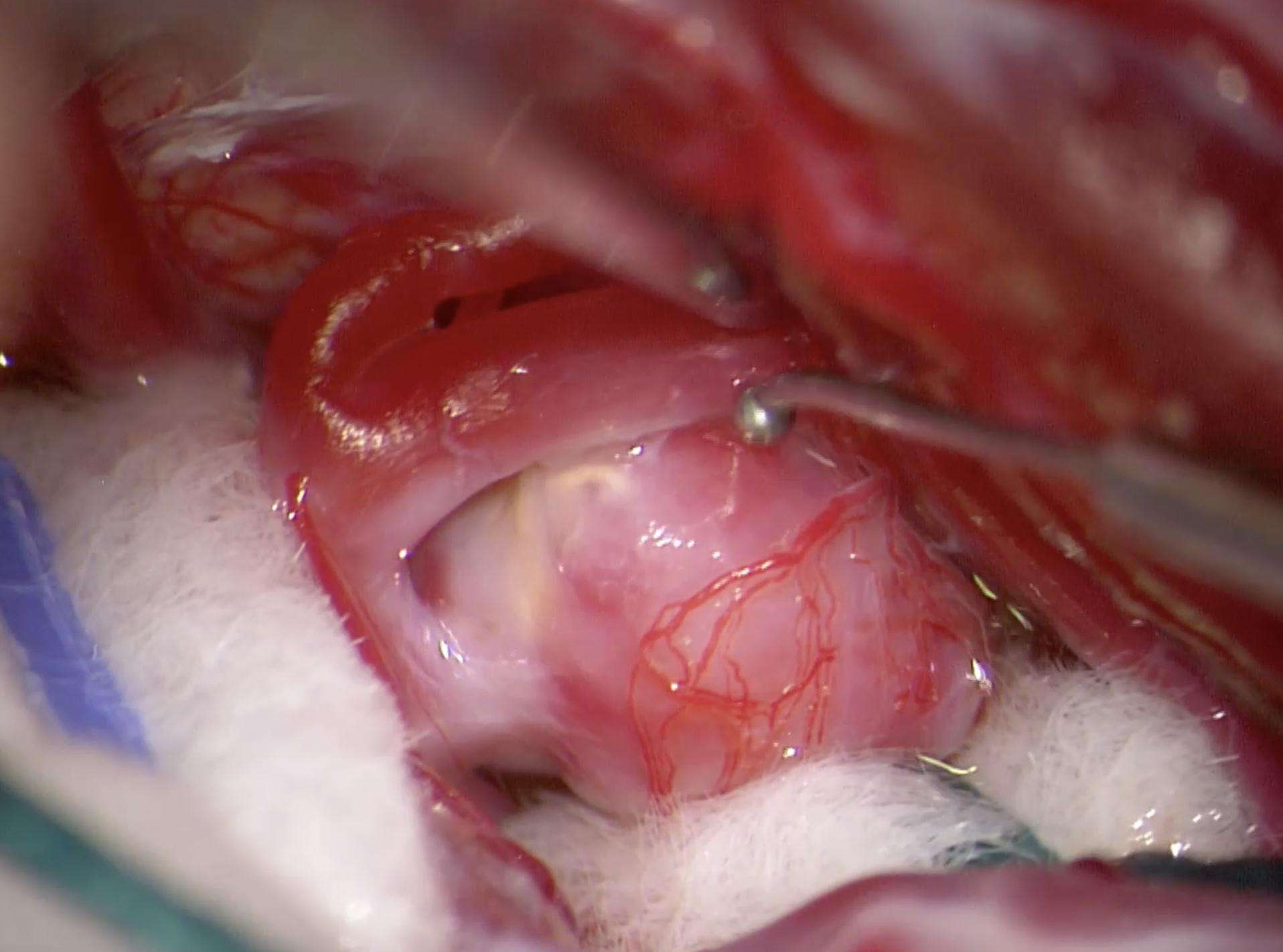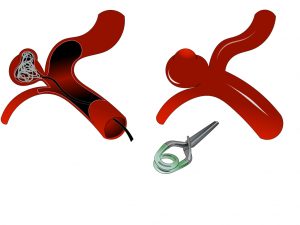An aneurysm is an arterial malformation that arises in a fragile area of the vessel wall, causing a dilatation called an “aneurysm sac” in which blood flows, and which may rupture.

Operative photograph of a cerebral aneurysm.
here are certain recognized predisposing factors, such as high blood pressure, active smoking and alcoholism. Certain rare diseases, such as familial polycystic fibrosis, are associated with the development of aneurysms.
Familial aneurysms are rare.
How does an aneurysm manifest itself?
The most common manifestation of an aneurysm is its rupture, leading to meningeal hemorrhage, i.e. the diffusion of blood into the sub-arachnoid spaces around the brain, which are occupied by cerebrospinal fluid. Sometimes rupture also leads to bleeding inside the brain, resulting in the formation of an intracerebral hematoma. In the event of a rupture, this is a serious pathology requiring urgent specialized multidisciplinary care involving a neurosurgeon, an interventional neuroradiologist and a neuro-resuscitation team. The prognosis is grave and the outcome uncertain.
More rarely, an aneurysm can manifest itself by compressing adjacent structures, such as the nerves responsible for the eye’s mobility. This results in double vision.
Last but not least, aneurysms are nowadays often discovered by chance, thanks to the proliferation of brain imaging tests such as CT and MRI scans. In this case, the question arises of whether or not to treat the problem. This depends on a number of factors, such as :
- Patient’s age,
- the risk of bleeding, which in turn depends on aneurysm size, location, shape and associated risk factors,
- The risk of treatment.
Treatment of an unruptured aneurysm is discussed at a multidisciplinary meeting attended by neurosurgeons and interventional neuroradiologists.
How is an aneurysm treated?
The two treatment modalities are microsurgery and embolization.
In complex cases, such as giant aneurysms, a combined surgical procedure with clipping and/or bypass and endovascular treatment may be proposed to reduce risks and optimize the therapeutic outcome.
In the vast majority of cases, the prognosis is very good in the case of cold preventive treatment prior to rupture, whereas in the case of rupture, the consequences of bleeding are serious or even very serious. This is why the risk of rupture needs to be carefully assessed, and why above a certain size or in the case of irregular shapes, aneurysms are usually treated preventively before they rupture.

Coil treatment (Left image). Clip processing (right image). The clip is applied to the neck of the aneurysm.
What are the risk factors?
There are certain recognized predisposing factors, such as high blood pressure, active smoking and alcoholism.
Certain rare diseases, such as familial polycystic fibrosis, are associated with the development of aneurysms.
Familial aneurysms are rare.
Bleeding frequency and risk
Its incidence is 2% of the general population, with an estimated risk of bleeding of less than 1%/year.



